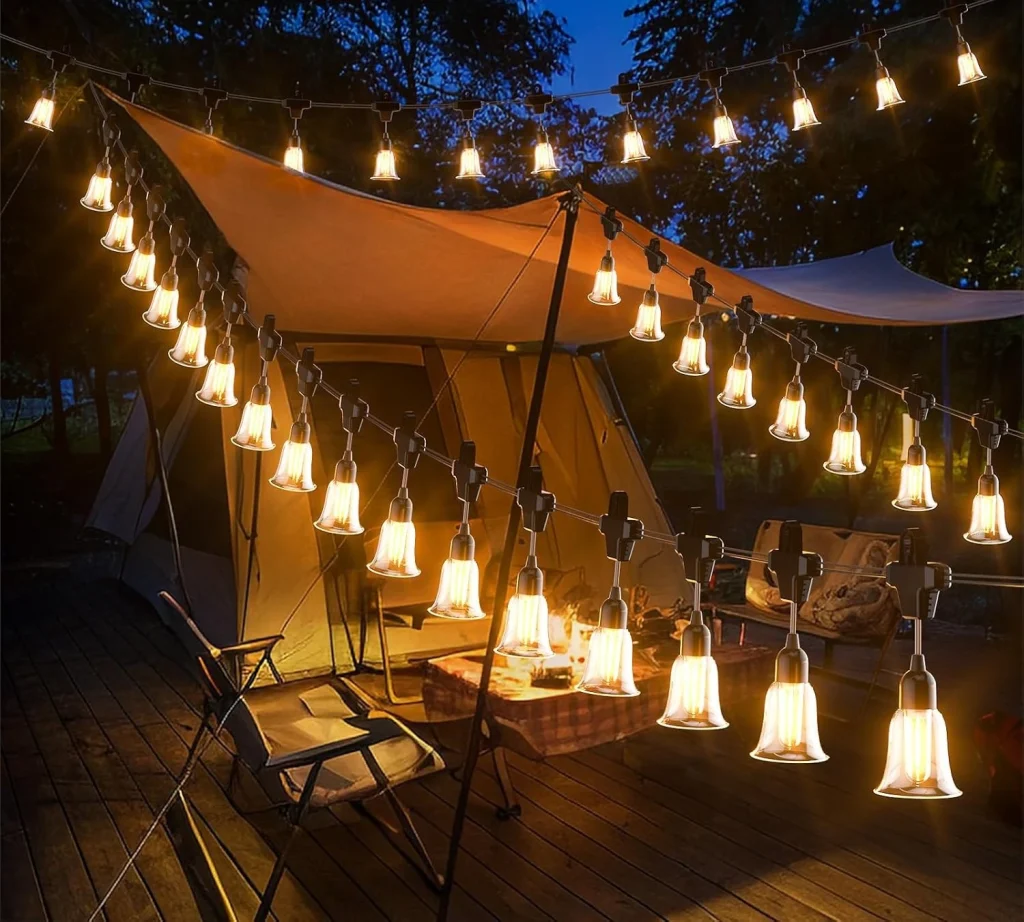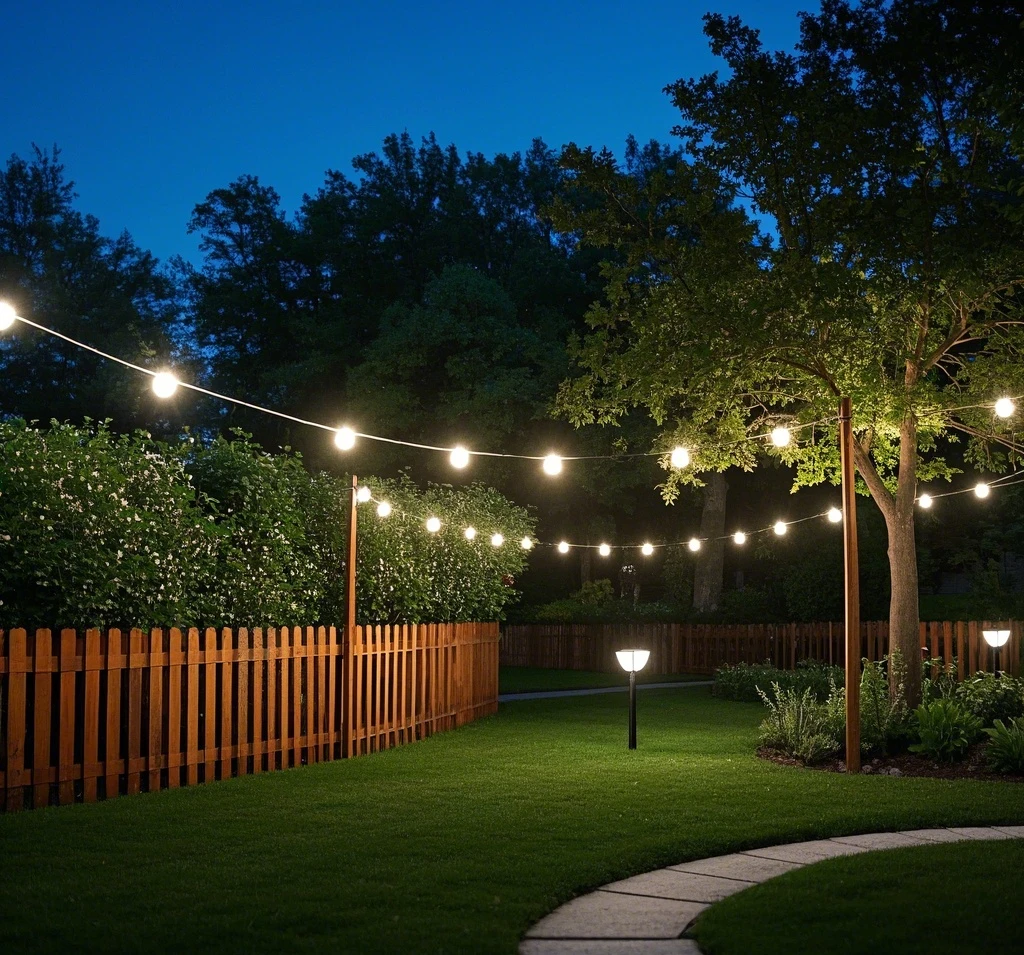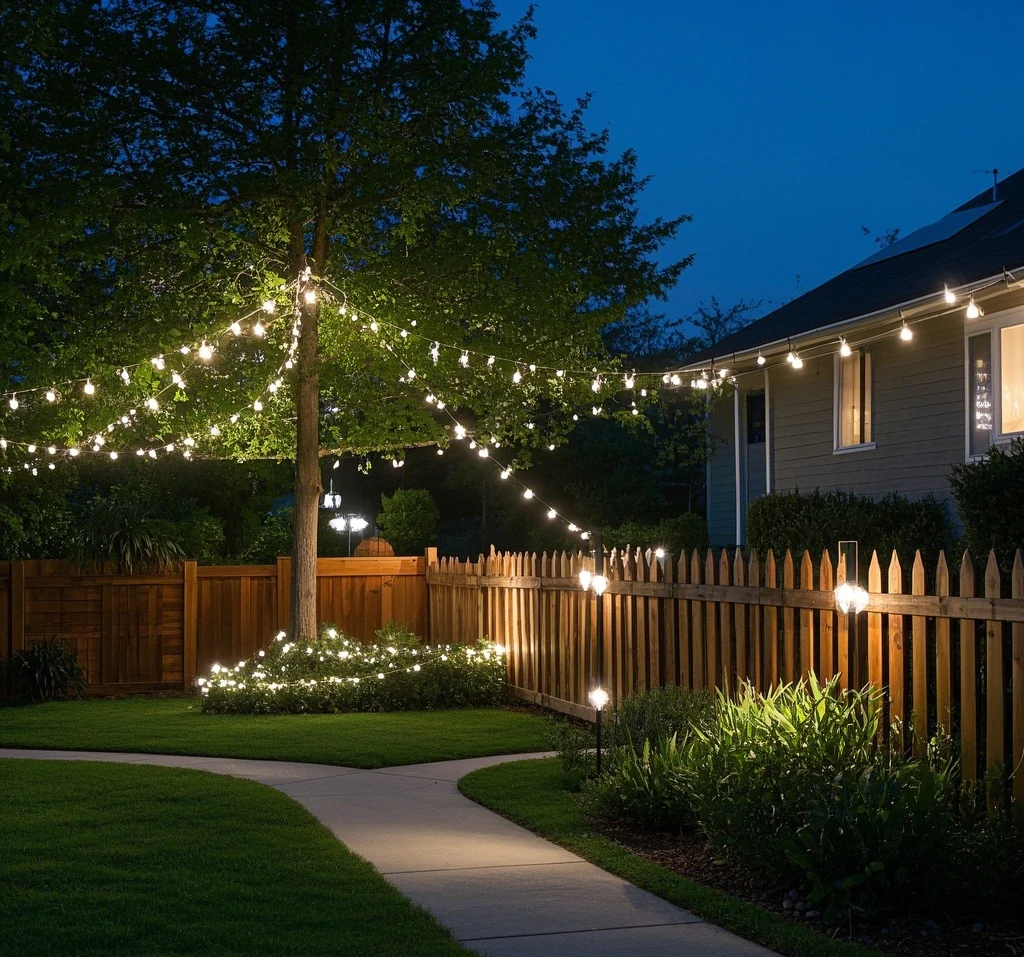Solar string lights have become a popular choice for illuminating outdoor spaces, offering an eco-friendly and cost-effective alternative to traditional lighting. Powered by solar energy, these lights rely on sunlight to charge their rechargeable batteries, which then power LED bulbs at night. A common question among users is: how long do solar string lights take to charge? This article explores the charging process, factors affecting charge time, and tips to optimize performance, drawing on industry insights and practical advice to provide a comprehensive guide for homeowners and enthusiasts.

Understanding the Charging Process of Solar String Lights
Solar string lights operate using a simple yet efficient system. A solar panel captures sunlight and converts it into electricity, which is stored in a rechargeable battery, typically a lithium-ion or NiMH type. This stored energy powers the LED string lights during the night. The time it takes to fully charge depends on several factors, including the solar panel’s efficiency, battery capacity, sunlight availability, and environmental conditions.
On average, solar string lights take 6–12 hours to fully charge, as noted in a 2023 article from The Spruce. Most lights are designed to charge during daylight hours and provide 6–10 hours of illumination at night. However, this range can vary significantly based on the quality of the components and external factors. Let’s break down the key elements that influence charging time and how they impact performance.
Factors Affecting Charging Time
Several variables determine how long solar string lights take to charge. Understanding these factors can help users optimize their lighting setups for maximum efficiency.
Solar Panel Efficiency
The solar panel’s efficiency is a critical factor in determining charging time. Most solar panels used in solar string lights are small, typically ranging from 1W to 5W, and made of monocrystalline or polycrystalline silicon. Monocrystalline panels, which have higher efficiency (15–20%), charge faster than polycrystalline panels (13–16%), according to a 2024 EnergySage guide. A high-efficiency solar panel can reduce charging time by capturing more sunlight in less time, even in less-than-ideal conditions.
To maximize efficiency, position the solar panel in direct sunlight, free from shade or obstructions like trees or buildings. Regular cleaning to remove dust, leaves, or bird droppings also ensures optimal solar energy absorption.
Battery Capacity and Type
The rechargeable battery determines how much energy can be stored and how long the lights will run. Most solar string lights use batteries with capacities of 600–2000 mAh. A higher-capacity battery, such as a 2000 mAh lithium-ion battery, takes longer to charge but provides extended runtime. For example, a 2023 SolarReviews article noted that a 1000 mAh battery typically requires 6–8 hours of direct sunlight to reach full charge, while a 2000 mAh battery may need 10–12 hours.
Battery type also matters. Lithium-ion batteries charge faster and hold their charge longer than NiMH batteries, which may lose capacity over time. Choosing solar-powered lights with high-quality lithium-ion batteries can reduce charging time and improve reliability.
Sunlight Availability and Weather Conditions
The amount and intensity of sunlight directly affect how long solar string lights take to charge. In optimal conditions—clear, sunny days with 6–8 hours of direct sunlight—most lights achieve a full charge within the 6–12-hour range. However, cloudy weather, shorter winter days, or geographic location can extend charging time. For instance, a 2024 Reddit discussion in the r/solar community highlighted that users in northern regions, like Canada or the UK, may need 10–14 hours of daylight to fully charge their lights due to lower sun angles.
Seasonal changes also play a role. In winter, when daylight hours are shorter, solar string lights may not fully charge, resulting in dimmer or shorter illumination. In such cases, supplemental charging via USB (available in some models) can bridge the gap.
Number of LED Bulbs and Power Consumption
The number of LED bulbs and their power consumption affects how much energy the rechargeable battery needs to store. A string with 50 LED bulbs will require less energy than one with 200, potentially reducing charging time. A 2023 Bob Vila review noted that high-wattage LEDs or densely packed strings increase the energy demand, which can strain the solar panel and battery, extending the time needed for a full charge.

Choosing energy-efficient LED bulbs with lower wattage (e.g., 0.02–0.05W per bulb) can help balance charging time and runtime, ensuring the lights perform well without overloading the system.
Optimizing Charging Time for Solar String Lights
To ensure solar string lights charge efficiently and perform reliably, consider these practical tips:
- Position the Solar Panel Strategically: Place the solar panel in a location with maximum sunlight exposure, ideally facing south in the Northern Hemisphere. Tilt the panel to match the sun’s angle for better efficiency.
- Clean Regularly: Remove dirt or debris from the solar panel to maintain its efficiency. A clean panel can reduce charging time by ensuring optimal sunlight absorption.
- Choose High-Quality Components: Opt for solar string lights with monocrystalline solar panels and lithium-ion batteries for faster charging and longer lifespan. Check for certifications like UL 588 or CSA C22.2 NO. 37-20 to ensure quality.
- Adjust for Seasonal Changes: In winter or cloudy conditions, consider models with USB charging options or larger solar panels to compensate for reduced sunlight.
- Limit Power Demand: Avoid connecting too many strings or using high-wattage LED bulbs, as this increases the energy needed and extends charging time.
A unique tip from a 2024 Bitpott discussion involves using reflective surfaces, like mirrors or white panels, near the solar panel to boost light exposure in shaded areas. While not a common practice, this creative approach can slightly reduce charging time in low-light conditions.
Typical Charging Times for Different Scenarios
The charging time for solar string lights varies based on the setup and conditions. Here’s a breakdown of typical scenarios:
- Standard Setup (1000 mAh Battery, 2W Solar Panel): In direct sunlight, expect 6–8 hours for a full charge, providing 6–10 hours of light. Ideal for small strings with 20–50 LED bulbs.
- High-Capacity Setup (2000 mAh Battery, 4W Solar Panel): Requires 10–12 hours to fully charge, supporting larger strings with 100–200 LED bulbs for 8–12 hours of illumination.
- Cloudy Conditions: Charging may take 12–14 hours or more, and the battery may not reach full capacity, resulting in dimmer or shorter runtime.
- Winter Months: With fewer daylight hours (e.g., 4–6 hours), charging may be incomplete unless supplemented with USB charging or a larger solar panel.
Troubleshooting Charging Issues
If your solar string lights take longer than expected to charge or fail to light up, consider these common issues and solutions:
- Insufficient Sunlight: Reposition the solar panel to a sunnier location or clean it to remove obstructions. A 2023 Department of Energy guide emphasized that even partial shade can significantly increase charging time.
- Battery Degradation: Over time, rechargeable batteries lose capacity. Replace older batteries (typically after 1–2 years) to restore efficient charging.
- Faulty Solar Panel: Check for cracks or damage on the solar panel. A damaged panel may reduce efficiency, extending charging time.
- Overloaded System: If too many LED bulbs are connected, the battery may struggle to charge fully. Reduce the number of bulbs or upgrade to a higher-capacity solar panel.
Safety Considerations for Charging Solar String Lights
While solar string lights are generally safe due to their low-voltage design, proper charging practices ensure longevity and performance. Avoid placing the solar panel near flammable materials, as prolonged heat exposure could pose a minor risk, though rare, as noted in a 2016 CPSC recall of solar lights with magnifying lenses. Ensure the rechargeable battery is not exposed to extreme temperatures (above 25°C or below 0°C), as this can affect charging efficiency and battery health.
Using lights with IP65-rated components protects against water and dust, ensuring reliable charging in outdoor conditions. Regular inspections of the solar panel, battery, and wiring can prevent issues that might prolong charging time or cause malfunctions.
Creative Applications and Charging Considerations
The versatility of solar string lights makes them ideal for various outdoor applications, but charging time must be considered for each use case. For example:
- Garden Ambiance: A small string with a 1W solar panel charges quickly (6–8 hours) and is perfect for subtle lighting along pathways.
- Event Decor: Larger setups with multiple strings may require a more powerful solar panel (4–5W) and longer charging time (10–12 hours) to support extended displays.
- Remote Locations: In off-grid settings, solar-powered lights with USB charging options can ensure consistent performance when sunlight is limited.
A 2024 Houzz article suggested using solar fairy lights with adjustable brightness settings to balance charging time and runtime, allowing users to dim lights on cloudy days to conserve battery power.
Conclusion
The question of how long do solar string lights take to charge depends on factors like solar panel efficiency, battery capacity, sunlight availability, and the number of LED bulbs. On average, expect 6–12 hours for a full charge, with high-quality components and optimal conditions reducing this time. By strategically positioning the solar panel, choosing energy-efficient LED bulbs, and maintaining the system, users can ensure their solar string lights charge efficiently and provide reliable illumination. As solar energy continues to power innovative lighting solutions, understanding and optimizing charging time allows homeowners to create stunning, sustainable outdoor displays with confidence.

Comments